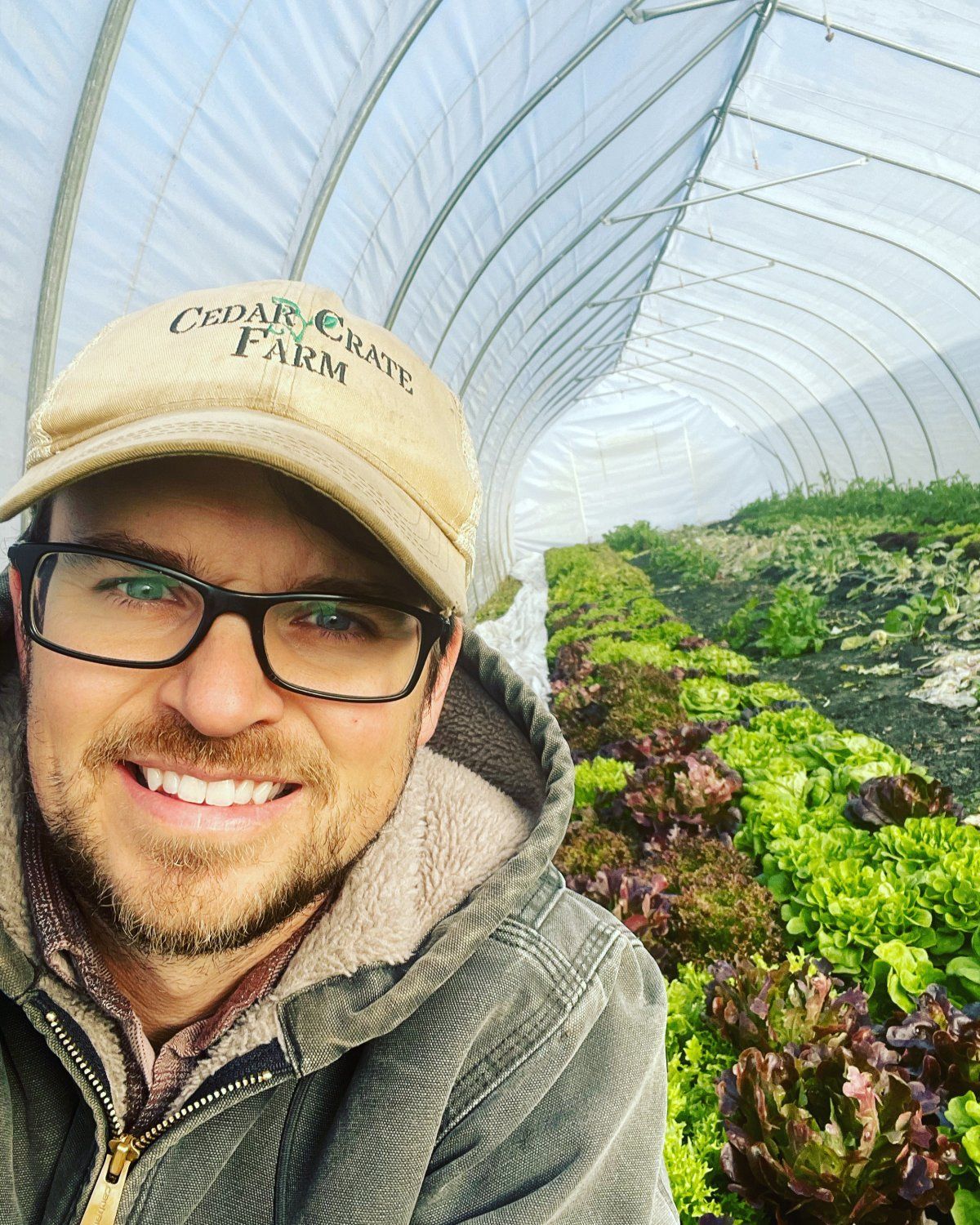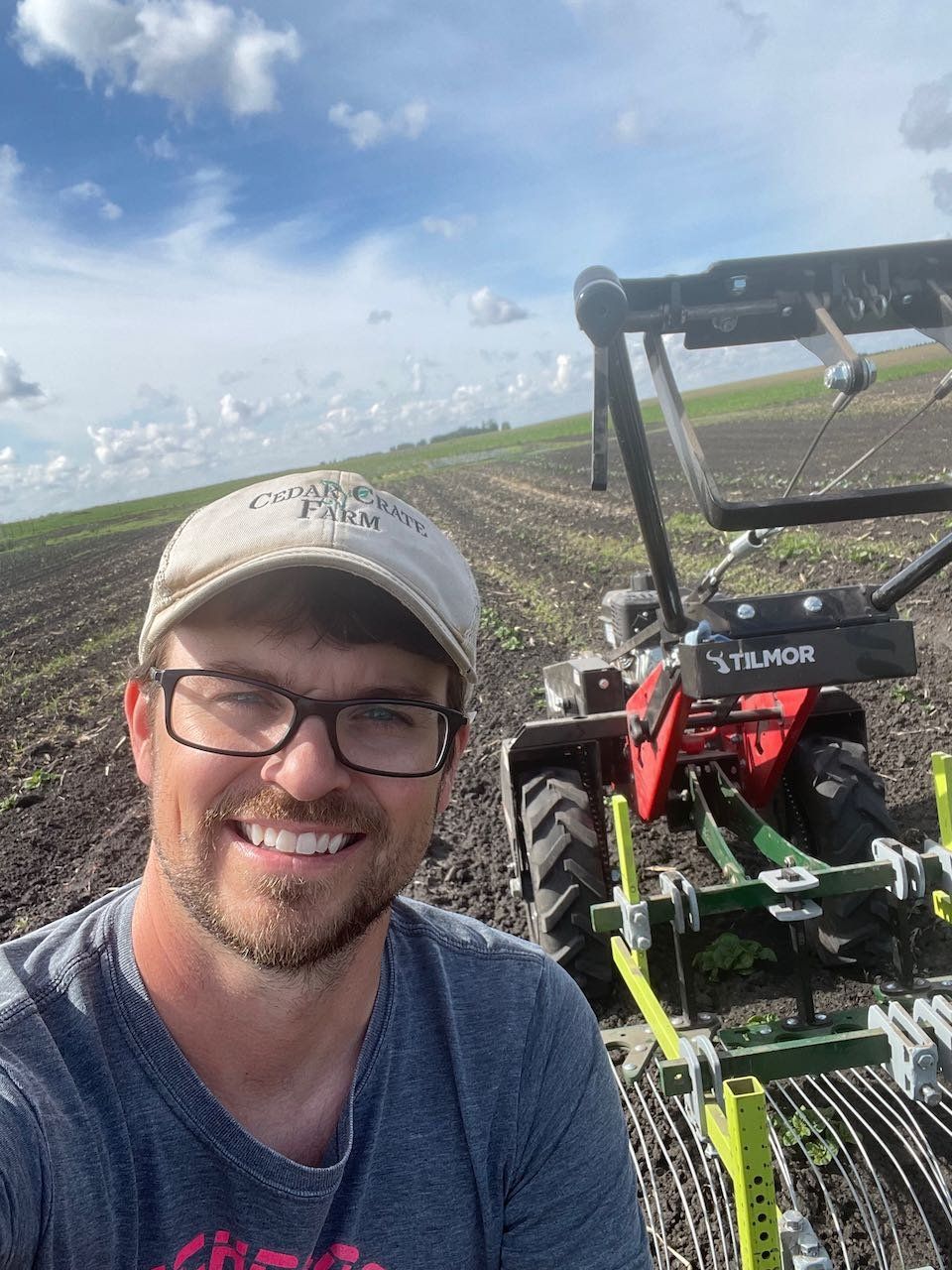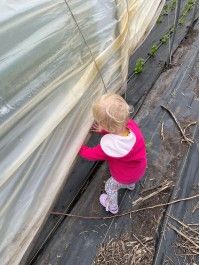After a cold, wet April it finally feels like spring here on the farm. We've been hard at work planting, watering, fertilizing, setting up infrastructure and building so we're ready for what we hope is our best season yet. Read on to hear about our busy spring!
Planting
We use a couple different strategies for planting on our farm including direct seeding and transplanting. Direct seeding refers to planting the seed directly into the soil in the crops intended location on the farm. We have a walk-behind seeder that helps us do this more efficiently. Transplanting refers to plants that we've started indoors or in our greenhouse with the intent of transplanting the live plant to it's intended location on the farm. Both strategies have advantages and disadvantages and certain crops work better for each strategy. We like to transplant crops like lettuce, tomatoes, peppers, broccoli, and others since it helps give the plants a head start and we can control the environment where the seed germinates more easily. Crops like sweet corn, green beans and beets are a lot less labor intensive to direct seed and generally do well when they are direct seeded.

Fertilizer
Did you know we use organic pelletized chicken litter for fertilizer which is sourced locally from High Island Organics? We love using chicken litter for fertilizer for a couple of reasons:
- It's thermally treated to kill any pathogens so it's safe to use on ALL of our crops.
- It's organic! Nuff said.
- It's local! We love supporting other local businesses and local farmers.
- It's easy to work with - we use a spreader attachment for our tractor to spread the fertilizer at our desired rate on our farm.

Infrastructure
There's a lot that goes into setting up infrastructure on our farm. Every year we set up irrigation lines, install trellis systems for crops like snap peas and tomatoes, and perform maintenance on our existing tunnels and this year we're wrapping up construction on our largest tunnel.
All of the different infrastructure on our farm plays an important role in reducing labor and maximizing our efficiency for the crops we grow. The trellis system for our peas helps reduce the labor required to pick peas while also keeping the peas dry (peas like cool, dry weather and disease spreads quickly in damp conditions). Tomatoes also benefit in the same way from being supported by a trellis.





